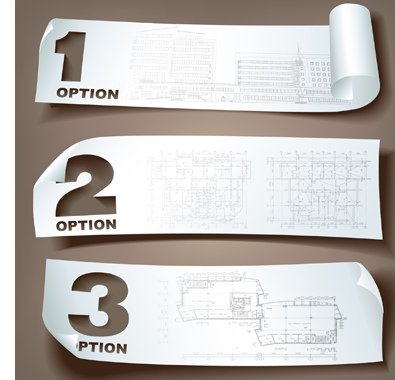Get More Engagement From Your Website
People put a lot of emphasis into many different aspects of building a successful website. But if your website doesn’t trigger an emotional or physical response from visitors, you’ll never get the results you desire. Visitors must “feel” connected once they reach your site, or you’ll lose them as a potential member or supporter. There are four major aspects of a successful website, they are the site’s first impression, the functionality of the website, the site’s content and design flow, and the website’s overall feel. The feel of a site is often overlooked especially by ministries and non-profits. Here are some strategies for ensuring your site initiates the right response.
All in our feelings…
Although some may differ on how a website’s “feel” will affect visitors. Luckily your crew at Ovia has spent a painstaking amount of time bringing to life the true concept of website feel (one of the four aspects of masterful websites).
When considering the feel of your site, you must understand what feelings do. There are two types of feelings for humans; one being physiological, and one being emotional. Therefore, the feel of your site, should illicit physical and/or emotional responses by those who visit. Anyone who tells you differently, hasn’t truly taken the time to understand the notion what a website’s feel really is.
Yes, when people visit your website, it should garner a physical and/or emotional response from them. From look, to content, to usefulness, your site should make the visitor move to a certain place, page, or direction, AND it should cause your visitor to experience emotions, such as passion, excitement, understanding, empathy, etc.

This is accomplished in many ways, but for the benefit of this post, we are only going to focus on two methods for ensuring the feel of your website is up to par.
“The OA Method”
developing the right content
The simplest way to evaluate your website’s feel is by using the OA Method (OA stands for Objective Adjective). By looking at your site from this standpoint, you can decipher whether your site introduces the type of emotional response you desire. NOTE: this can be done by the site owner or designer, but it is best to request the assistance of a third-party (friend, ,co-worker, neighbor, Ovia) to ensure you’re getting the most unbiased responses possible.
The OA Method is as simple as compiling a list. Sit down in front of your screen, pull up your website, and begin immediately writing down any and every adjective that comes to mind during the first 12 seconds of seeing the site. Although this may sound somewhat daunting, trust us when we say this is a very simple exercise. It’s as easy, as word association. It’s best to bring up the site up after you sit down. Our analyses shows having the site already up on the screen leads to fewer adjective associations and ultimately a biased listing.
For those of you who may be unable to truly visualize what this looks like, here are some adjectives the Ovia crew has come up with using the OA Method when looking at a new member’s site: professional, beautiful, girly, boring, exciting, upscale, cool, ugly, busy, old, expensive, quirky, young, tacky, exclusive, structured, blue-collar, and childlike. All of these words have the ability to call an emotion out of the person visiting the website.
Getting started
How does the OA Method work? When a person first views your site, adjectives begin to enter their mind sub-consciously. These adjectives then trigger your visitor’s brain to bring up an emotional response. Depending on the person visiting the site, this can be either a positive emotion, or a negative one. You can use these emotions as a tool to make sure visitors go where you want them to on your website.
Each adjective, calls an emotion, which then helps the visitor associate or disassociate themselves with the site as a whole. This association works in a way NO OTHER ASPECT of your site will. It’s extremely important to understand the association, and use it to your advantage.
For example, if a person visits your website and the adjectives that flood their subconscious are words like family, care, and passion, it will let them know immediately whether they want to stay on your website or not. They will either associate with the fact that they desire to get involved with an organization that values family, cares for each other, and inspires passion, OR they will disassociate and determine that this organization may be at a level of engagement and commitment they are not ready to invest. No matter which of the two ways they decide to proceed, you as the ministry or non-profit or church, ultimately win. You either draw in prospective members and supporters who have essentially qualified themselves, or you allow the visitor to disqualify themselves from your cause, thus eliminating the fruitless time you would spend working with an unmotivated associate.
[For reference, in business/sales a qualified buyer is one who has the desire to purchase (wants the product/service), the ability to purchase (can afford the product/service) and the authority to purchase (does not need permission or approval go forward). Similarly we want qualified members and supporters who desire to be a part of your cause, understand the culture of your organization, and are motivated to join.]
Objective Adjective Implementation
The use of the Objective Adjective Method works across all segments and causes. It will in essence validate the person visiting your website. Our professionals have yet to find a website where the OA Method does not produce fruitful suggestions regarding changes or adjustments that can be made to better capture the visitor.
Your next step, is to begin inserting these words and phrases into your site’s headings and content. That way, when people land on your page they immediately associate with the feel of your website. NOTE: Be sure you’re inserting this content in a value-added way. The days of just adding random words to your site are gone. As people browse through your site, they must be able to associate with your site in a manner that proves you have valuable information to give. If you aren’t adding content that is valuable and informative, then you remove the benefit of the OA Method.

As they read these words they will subconsciously begin to agree with the message of your website. As they agree with the message, they agree with the idea of investing their time, talent, money, or effort into your mission. It is basically equivalent to the old sales method of nodding your head when asking for a sale. A person walks into your store, chooses a product, and then begins to decide whether they really want to purchase it or not. The salesperson, as they are trying to convince the prospect to buy the product, nods their head while talking to the prospect. This conveys a message that says, “Yes!” to the prospective buyer. As they see this, they subconsciously come into agreement with the salesperson. Not realizing they are agreeing to the head nodding and not necessarily the idea of purchasing, they move forward with the purchase of the product.
This is what the OA Method, and a website with the appropriate “feel” accomplishes for your business. It moves your visitors closer to the “Yes!” by triggering the proper emotional responses that they can come into agreement with. Remember, the first objective of your website is to capture the visitor.
It’s true you want to inform them, impress them, sell something to them, etc., but before any of that you must capture them and essentially give them a reason to stay on your site. Helping them come into agreement with the message on your site, captures them, and opens them up for you to begin to inform, and diffuse objections.
Having a site with the right “feel” captures the visitor every time without fail.









